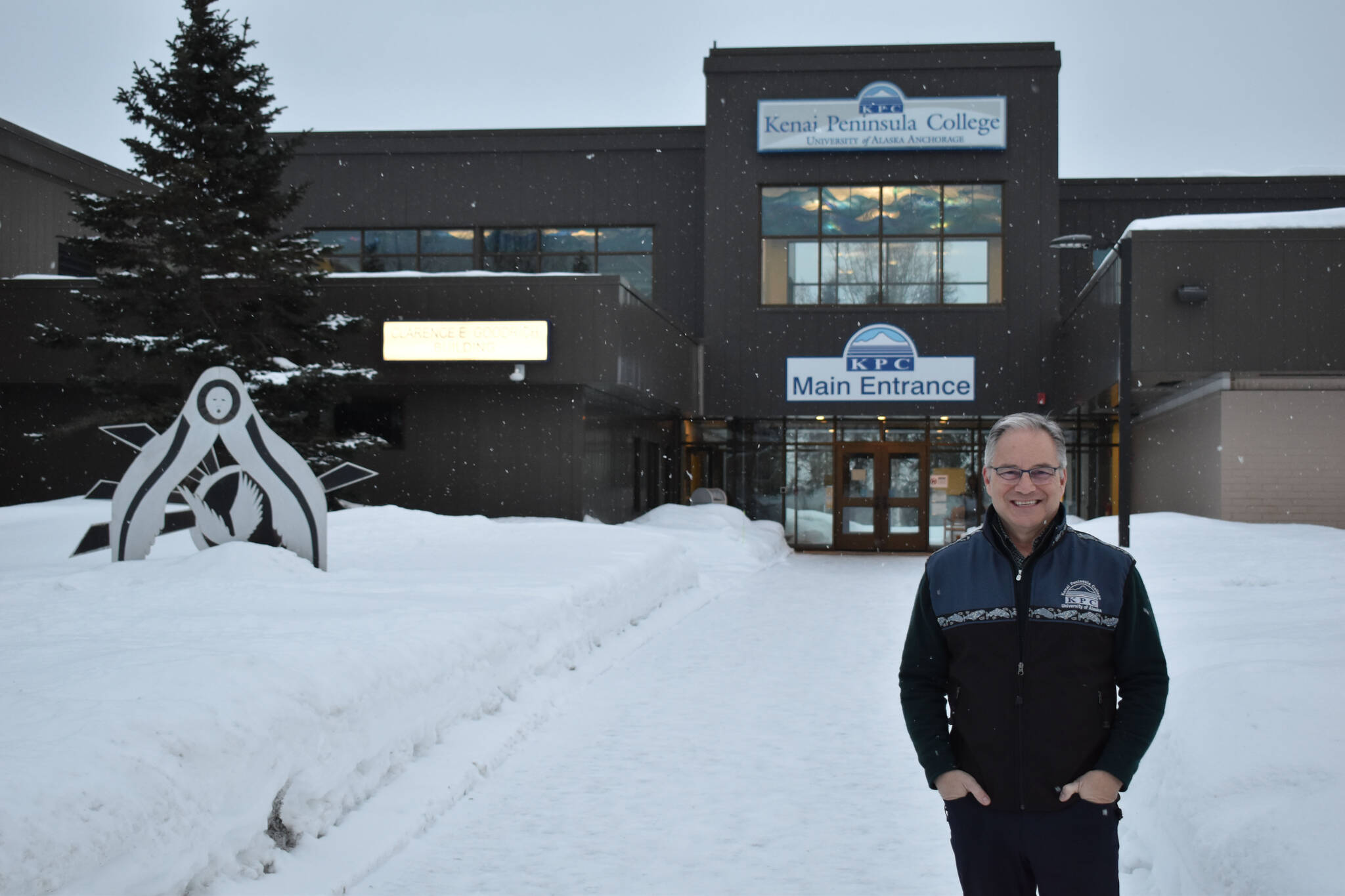During a visit this week to Kenai Peninsula College, University of Alaska Anchorage Chancellor Sean Parnell discussed the role of the university in developing the workforce in the Kenai Peninsula and Alaska.
The visit was for getting some “face-to-face” time with KPC leadership and students, as well as others in the community, Parnell said Thursday. KPC is part of the UAA system.
He said that KPC is growing 20% year over year in attendance, and that for the first time in years, UAA has seen an increase. The median age of students at KPC is 26, he said.
“What it tells me is that people are turning back to education as a way of changing the path of their lives.”
Parnell said that during the visit he had met with community leaders, including Kenai Peninsula Borough School District Superintendent Clayton Holland and Kenai Peninsula Borough Mayor Mike Navarre.
“Whatever the workforce needs are on the peninsula, we want to meet those needs,” Parnell said. “UAA is Alaska’s largest workforce provider. … Creating those opportunities and creating those pathways for opportunities is huge; it’s what we’re here for.”
“Huge” needs were identified by Parnell and KPC Director Cheryl Siemers in health care, education, oil and gas, and process technology.
“We are producing as many graduates as we can, that come through the door,” Siemers said. “Industries tell us ‘we need more, we need more people.’”
She said that KPC needs to market some of those degrees, like process technology, better.
The Associate of Applied Science in Process Technology is a degree program described in the UAA catalog as preparing students “for entry-level employment as operations technicians in a variety of industries, including petroleum, mining, power generation, chemical manufacturing, renewable energy, and food processing.” The catalog says it is only available at KPC’s campuses.
Siemers said there are well-paying jobs accessible with that degree, but when she visits high schools the students don’t know what process technology is.
“It’s getting the word out,” she said. “‘What is this?’ ‘What is this training for?’ ‘How can I use it?’”
Similarly, Parnell described UAA’s College of Health, known for nursing, but offering dozens of other certifications and degrees.
University wide, Siemers said there are steps being taken to offer more, shorter programs and credentials that can be finished in one semester or year. The university is also offering more flexible class styles, with increasingly more wholly online or hybrid classes.
Parnell said that effort is in a response to a perceived shift in the workforce.
“They want to get trained up faster, and they want to get to work,” he said.
Those shorter programs are designed and “ensured” to be the initial requirements for the next step.
“We create those pathways that are stackable so that they can always come back and get that next helpful degree or certification,” Parnell said.
Parnell said that the opportunities at UAA and the community campuses in Soldotna and Homer “are not as well known as they ought to be.” He described how he himself graduated from Anchorage’s East High School and left the state for a business degree.
“I never really thought about UAA as providing an opportunity for me, but it’s also because I never really explored it or saw it,” he said. “I could get that same undergraduate degree at UAA for about a quarter of the cost and I would have been miles ahead financially.”
Parnell said that during an ice cream social earlier in the day, he sat with KPC students and asked them to describe the atmosphere on campus. He said they told him KPC was welcoming and supportive.
“That climate is attractive to students,” he said. “When you call KPC that’s the climate you’re walking into. We want to speak with you about your future and what programs are available.”
Kenai Peninsula College is part of the University of Alaska Anchorage system, for more information visit kpc.alaska.edu.
Reach reporter Jake Dye at jacob.dye@peninsulaclarion.com.

